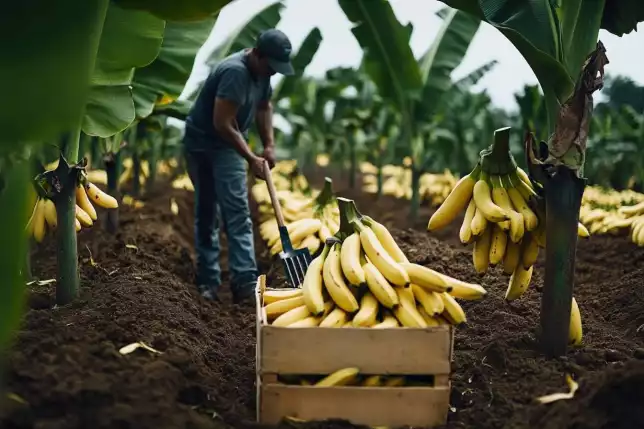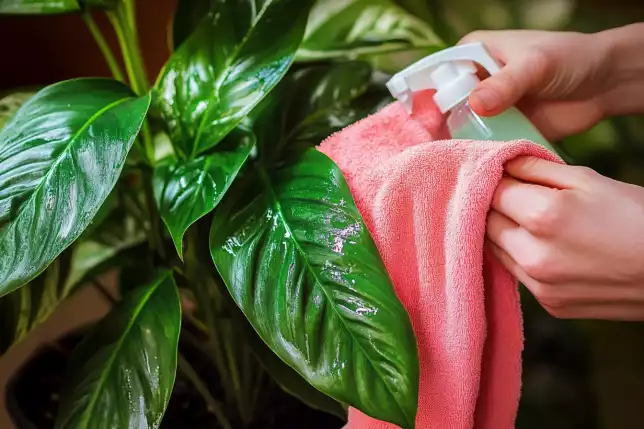
Growing bananas in non-tropical climates may seem challenging, but with the right variety and care, it’s entirely possible. This guide will walk you through the best tips for successfully growing bananas in colder regions, from choosing the right variety to protecting your plants during winter.
1. Understanding Banana Plants: Can You Grow Them in Non-Tropical Climates?
Bananas are typically grown in tropical regions, but certain cold-hardy varieties can thrive in non-tropical climates with proper care.
Key Differences:
- Tropical vs. Non-Tropical Growing: Tropical bananas require consistent warmth, whereas cold-hardy varieties are more tolerant of cooler temperatures.
- Banana Varieties: The cold-hardy varieties tend to be smaller, making them easier to grow in regions with colder weather.
2. Choosing the Right Banana Variety for Non-Tropical Climates
Choosing the right variety is essential for growing in non-tropical climates. Cold-hardy varieties have been bred to withstand lower temperatures and harsher conditions.
Cold-Hardy Varieties:
- Musa Basjoo: This is one of the most cold-tolerant banana varieties, perfect for growing in colder climates.
- Rajapuri: A smaller variety, Rajapuri tolerates cooler temperatures while still producing sweet fruit.
Pro Tip: When selecting a variety, consider your region’s typical winter temperatures to ensure your banana plants thrive.
3. How to Plant Bananas in Non-Tropical Climates
In colder regions, planting bananas requires specific techniques to help them survive and grow. Follow these steps to ensure successful planting.
Planting Steps:
- Soil Preparation: Use fertile, well-draining soil. Adding compost or organic matter will help enrich the soil.
- Spacing: Make sure to space the banana plants at least 5-7 feet apart to give them room to grow.
- Depth: Plant the banana corms (roots) about 4-6 inches deep to protect them from frost.
Learn more about planting techniques for other fruit trees here.
4. Caring for Banana Plants in Non-Tropical Climates
Proper care is critical to growing healthy banana plants in non-tropical regions. Adjust watering, mulching, and fertilizing routines to meet the needs of your plants.
Key Care Tips:
- Watering: Keep the soil consistently moist without waterlogging. In colder months, reduce watering.
- Mulching: A thick layer of mulch around the plant helps retain moisture and insulates the roots.
- Fertilizing: During the growing season, use a high-potassium fertilizer to promote healthy growth.
5. Winter Protection for Banana Plants
Frost can damage banana plants, so protecting them during winter is crucial. These strategies will help safeguard your plants from freezing temperatures.
Winter Protection Techniques:
- Mulching: A thick layer of mulch will protect the roots from freezing.
- Wrapping: Wrap the plant’s stem in burlap or frost cloth to add an extra layer of insulation.
- Overwintering: If you’re growing bananas in containers, move them indoors or to a sheltered area during the winter to prevent frost damage.

6. Growing Bananas in Containers
In regions with extremely cold winters, growing bananas in containers offers the flexibility to move the plants for protection.
Container Growing Tips:
- Container Size: Use a large pot (at least 18-24 inches wide) to accommodate the banana plant’s root system.
- Sunlight: Place the container in a sunny spot, ensuring it gets 6-8 hours of sunlight daily.
- Watering: Container plants can dry out quickly, so regularly check moisture levels and water when necessary.
7. Pruning and Maintaining Banana Plants
Pruning helps manage the size of banana plants and encourages fruit production. Regular maintenance will ensure your plant stays healthy.
Pruning Techniques:
- Size Management: Remove dead or damaged leaves to improve airflow and allow more sunlight.
- Encouraging Growth: Cut back any suckers (small offshoots) from the base to allow the plant to focus its energy on fruit production.
8. Managing Pests and Diseases in Banana Plants
Banana plants can be susceptible to pests and diseases, even in non-tropical climates. Here’s how to address the most common problems.
Common Pests:
- Aphids: Use insecticidal soap or neem oil to keep aphid infestations under control.
- Spider Mites: Increase humidity around the plant to deter spider mites.
Common Diseases:
- Panama Disease: Caused by a fungus, this disease can affect banana plants. Ensure proper drainage to reduce the risk.
- Black Sigatoka: This fungal infection causes leaf spots. Prune affected leaves and apply fungicide if necessary.
9. Harvesting Bananas in Non-Tropical Climates
To enjoy sweet, ripe bananas, knowing when to harvest is key. Here’s how to determine when your bananas are ready for picking.
Harvesting Tips:
- Ripeness: Bananas are ready to be harvested when they turn from dark green to a lighter yellow-green.
- Harvesting: Cut the entire bunch of bananas when the first fruit begins to ripen. The rest of the bananas will ripen off the plant.
Ripening in Cold Climates:
- Store the harvested bananas in a warm, dry place to allow them to ripen fully indoors.
External Resource: For more detailed tips on growing bananas, visit this guide on banana growing.
Frequently Asked Questions
Q: Can banana plants survive winter in non-tropical climates?
A: Yes, cold-hardy banana varieties can survive winter with proper protection, such as mulching and wrapping the stems.
Q: How long does it take for banana plants to bear fruit?
A: Banana plants usually bear fruit 9-12 months after planting, depending on the variety and growing conditions.
Q: Can I grow bananas indoors?
A: Yes, dwarf varieties can be grown indoors in large containers with sufficient sunlight.
Conclusion
Growing bananas in non-tropical climates is possible with the right variety, care, and protection techniques. By choosing cold-hardy varieties and following these tips, you’ll be able to enjoy homegrown bananas, even in colder regions.


1 thought on “Best Tips for Growing Bananas in Non-Tropical Climates”